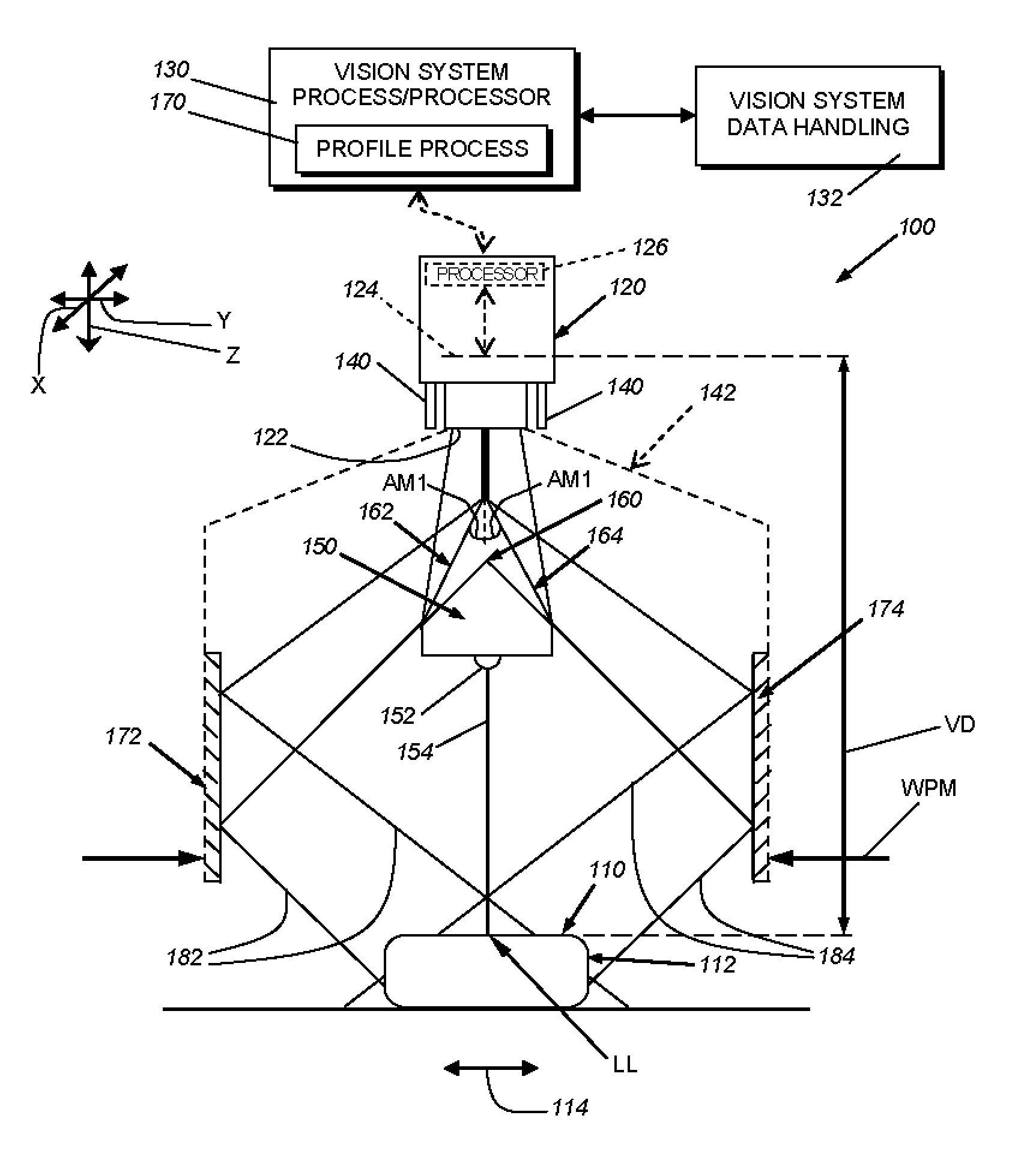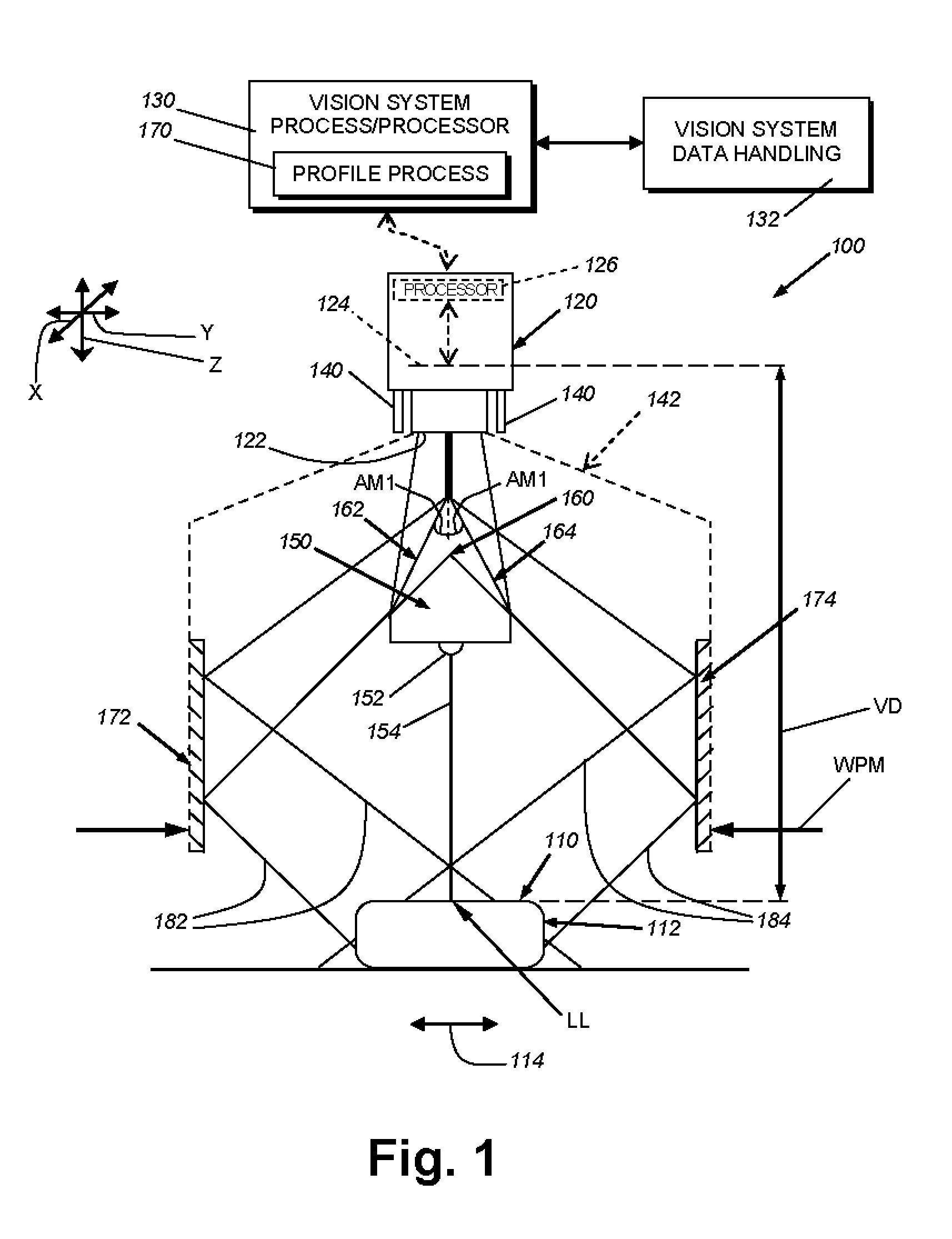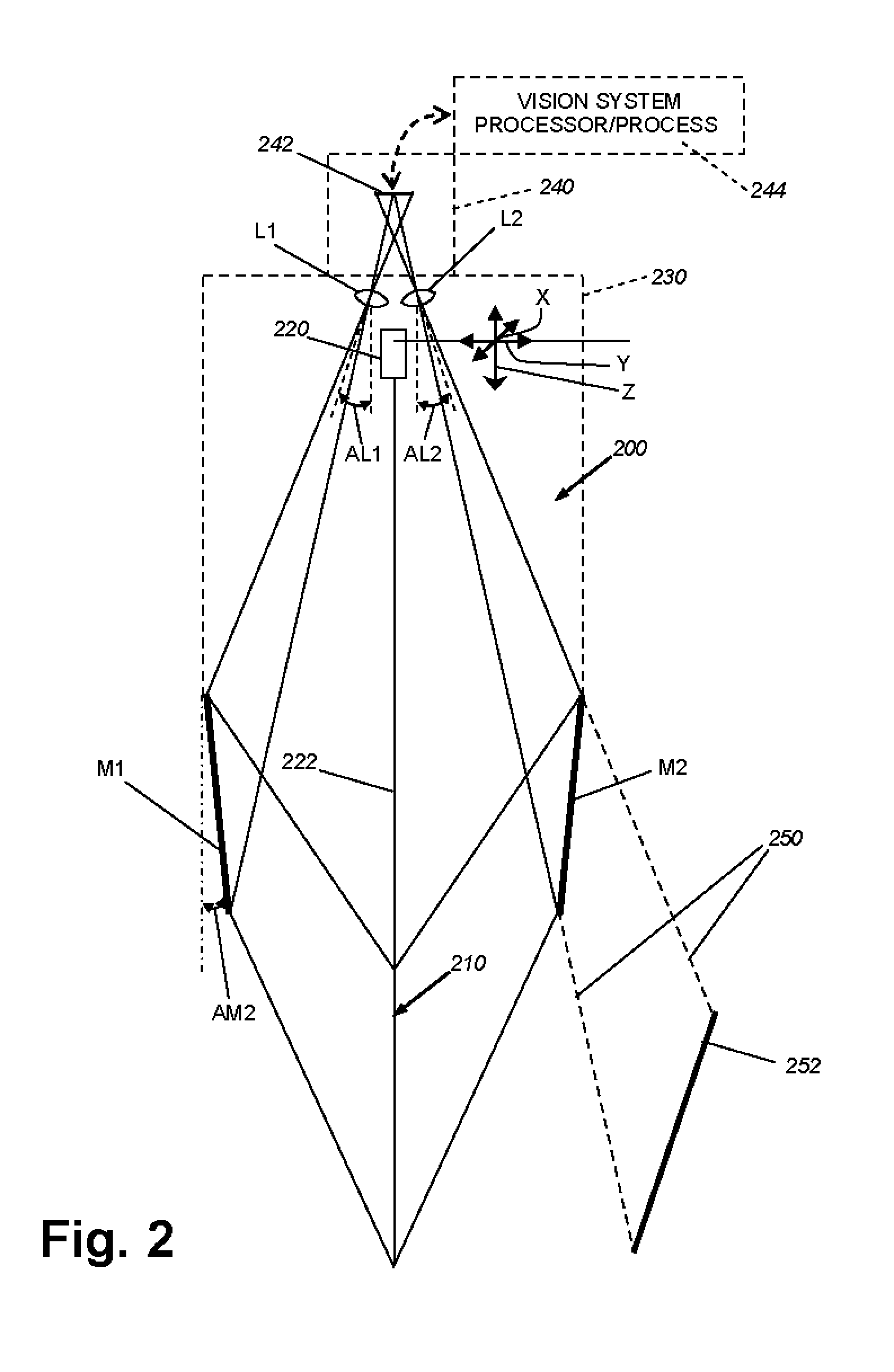Dual-view laser-based three-dimensional capture system and method for employing the same
a three-dimensional capture and laser technology, applied in the field of vision system cameras, can solve problems such as three-dimensional (3d), and achieve the effect of less (or, more compact overall unit, and reduced signal-to-nois
- Summary
- Abstract
- Description
- Claims
- Application Information
AI Technical Summary
Benefits of technology
Problems solved by technology
Method used
Image
Examples
Embodiment Construction
[0013]FIG. 1 is a system 100 for 3D capture (profiling) of the surface 110 of an exemplary object 112. The object can be stationary or in relative motion (arrow 114) with respect to the system 100 along a predetermined direction. It is contemplated in instances of relatively motion that either of (or both) the system and the object moves. Where motion occurs, the system can perform a scan of the surface 110, by acquiring images (image frames) at each of a large number of locations along the surface. This is described further below.
[0014]The system 100 includes a vision system camera 120 that can be any appropriate camera assembly having a fixed or removable lens arrangement 122 that focuses received light onto an image sensor (or simply termed “sensor”) 124 that defines the camera's image plane. The sensor is operatively connected to the camera's on-board processor assembly 126. The processor assembly 126 can control system operation and / or various regulation processes, including bu...
PUM
 Login to View More
Login to View More Abstract
Description
Claims
Application Information
 Login to View More
Login to View More - R&D
- Intellectual Property
- Life Sciences
- Materials
- Tech Scout
- Unparalleled Data Quality
- Higher Quality Content
- 60% Fewer Hallucinations
Browse by: Latest US Patents, China's latest patents, Technical Efficacy Thesaurus, Application Domain, Technology Topic, Popular Technical Reports.
© 2025 PatSnap. All rights reserved.Legal|Privacy policy|Modern Slavery Act Transparency Statement|Sitemap|About US| Contact US: help@patsnap.com



